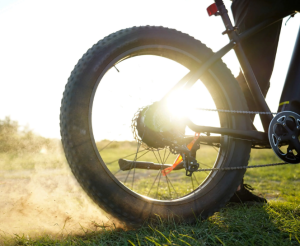The question of whether electric bikes can be used in snow is one that interests many cycling enthusiasts and commuters alike. With the growing popularity of electric bikes, it's important to understand their capabilities and limitations in different weather conditions, particularly in snow. The term "electric bikes for snow" has become increasingly relevant as manufacturers and riders explore the versatility of these bikes in various environments.
Electric bikes, also known as e-bikes, are equipped with an electric motor that assists with pedaling. This feature can be particularly advantageous in challenging conditions like snow. The motor provides additional power, making it easier to navigate through heavy snowfall and slippery surfaces. However, using an electric bike in the snow requires consideration of several factors, including the bike's design, the type of tires, and the rider's experience.
One of the key aspects to consider is the bike's design. E-bikes designed for snow typically have features that enhance their performance in these conditions. This includes wider tires for better traction and stability, waterproof components to protect the electrical system, and a robust frame design that can withstand the rigors of snowy terrain. The weight distribution in these bikes is also critical, as it affects their stability on slippery surfaces.
Tire choice is paramount when riding an electric bike in snow. Tires with larger treads and greater surface area provide better grip and stability, reducing the likelihood of slipping. Some riders opt for studded tires, which offer superior traction on ice and packed snow. The tire pressure also needs to be adjusted accordingly; lower pressure increases the tire's contact area with the ground, enhancing grip.

Battery performance is another crucial factor. Cold temperatures can significantly impact the efficiency of lithium-ion batteries commonly used in electric bikes. In colder environments, the battery's range can decrease, and it may not deliver the same level of power as it would in warmer conditions. Therefore, riders should plan their trips carefully, considering the reduced range and ensuring their battery is fully charged before heading out.
Riding an electric bike in snow also demands certain skills and precautions. Riders need to be aware of how snow affects handling and braking. The electric assist should be used judiciously, as too much power can lead to loss of control, especially on slippery surfaces. It's also essential to dress appropriately for the cold weather and to have clear visibility, as snow can impair vision.
Maintenance is another important aspect of using electric bikes in snowy conditions. After each ride, the bike should be cleaned to remove any snow, ice, or road salt that can corrode the metal parts and damage the electrical components. Regular checks and maintenance ensure that the bike remains in good working condition and safe to ride.
The growing interest in using electric bikes during winter has led to the development of models specifically designed for snowy conditions. These bikes are engineered to offer better performance, safety, and comfort when riding on snow-covered trails and roads. For those looking to explore the world of electric bikes suitable for snowy conditions, a range of options can be found here.
In conclusion, electric bikes can indeed be used in snow, provided that they are appropriately equipped and the rider takes the necessary precautions. With the right bike, tires, and skills, riding an electric bike in the snow can be a safe, enjoyable, and efficient way to travel or enjoy winter landscapes. As technology advances, we can expect to see even more innovations that enhance the snow-riding experience for electric bike enthusiasts.